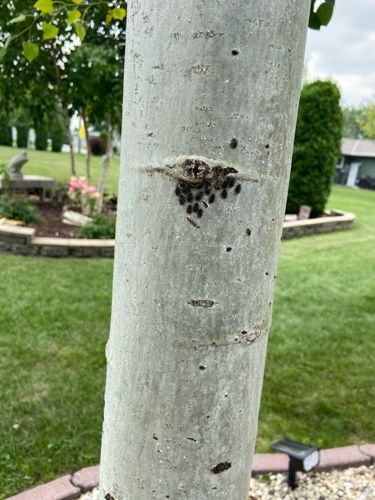Aphids (specifically, likely woolly aphids or similar tree-dwelling aphids)
Scientific Name: Aphididae (various species within this family)
Order & Family: Hemiptera, Aphididae
Size: 1-10 mm (typically small, pear-shaped insects)

Natural Habitat
Various plants, trees, and shrubs. Often found on the undersides of leaves, stems, and bark, particularly on new growth.
Diet & Feeding
Plant sap (phloem sap) - they are piercing-sucking insects that feed on the sap of plants.
Behavior Patterns
Aphids often reproduce rapidly, forming large colonies. They can be found clustered together, as seen in the image. Many species secrete a sugary liquid called honeydew, and some, like woolly aphids, produce a waxy, cotton-like substance for protection. They can reproduce both sexually and asexually (parthenogenesis).
Risks & Benefits
Risks: Can cause damage to plants by sucking sap, leading to stunted growth, distorted leaves, and sometimes transmission of plant viruses. Honeydew can promote the growth of sooty mold, which can reduce photosynthesis. Benefits: Serve as a food source for many beneficial insects (e.g., ladybugs, lacewings) and birds. Some species can be used in biological control programs.
Identified on: 10/20/2025